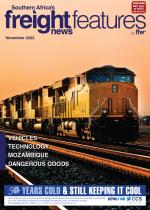Collaboration and information-sharing are on the increase as more Customs to Customs (C2C) and Business to Customs (B2C) solutions are integrated across the Southern African Development Community (SADC), says Michael Henning, sales and general manager at Easy Clear.“This is leading to greater visibility and more availability of data, primarily when it comes to the movement of trade, which guides decision-making about the fiscus. “It also provides more data to analyse, thereby enabling a greater understanding of foreign policy – which, in turn, leads to improved foreign investment,” he explains.According to Henning, the private sector has always led the charge when it comes to the adoption of new ideas – in this case, technological advancement – as a result of having to be f lexible and agile.The private sector has also been driven by consumer demand for the sector to remain relevant in our rapidly changing world. So, says Henning: “The Internet of Things (IoT), Application Programming Interfaces (APIs) and blockchain have enabled decisions to be taken based on data and visibility that are more readily available from one end to the consumer end of the supply chain.”Henning tells Freight News that Industry 4.0 is no longer about reducing paperwork, but rather about ensuring visibility across the supply chain, inf luencing business decisions that can make or break a business. “It is about providing information right away and not ‘as soon as I can generate the report’,” he says. “Data is driving change, and on this continent that is something dearly needed to attract foreign investment and create much-needed jobs.”He says the rate at which technology is being adopted in the freight sector is speeding up. “It has been higher than ever before, driven by innovative and enthusiastic service providers in the field. “Companies such as ours, coupled with businesses which realise the need for systems and solutions that enable the business, are the driving force – along with entrepreneurial and innovative people.”According to Henning, the shift is from on-premises “legacy-based” software to web-based software-as-a-ser v ice (Sa a S). In addition, the integration of third-party systems via APIs and/or blockchain technology is enabling the hyperconnectivity of the supply chain – a phenomenon that is fast gaining momentum. “This is at the forefront of the Easy Clear approach. The adoption of current technology with the end-consumer in mind remains at the heart of our efforts.”Asked about barriers to entry, Henning believes the cost of connectivity is an issue. “It is less so these days as industry collaborates, albeit somewhat reluctantly, for fear of losing any perceived competitive advantage through technological integration and the inevitable collaboration. “The upskilling of existing staff and training is a challenge for the sector as the adoption of technology replaces repetitive tasks. This means the person who used to perform such tasks must adapt and learn to grow, which can be a challenge as there is resistance to change – though this is not always the case. “I have seen organisations and their staff embrace change and reap the benefits of the technological wave that sweeps through as a result.”Henning maintains that while technology brings about change and some uncertainty, it also brings opportunity. “The opportunity to learn, grow and improve. Where people grow and systems improve, the entire supply chain improves, becoming more efficient. Businesses that have adapted and embraced this change will also grow.”
The new normal is about systems integration, visibility and agility
08 Nov 2022 - by -
0 Comments
November 2022 Compendium

08 Nov 2022
08 Nov 2022
08 Nov 2022
08 Nov 2022
08 Nov 2022
08 Nov 2022
08 Nov 2022
08 Nov 2022
08 Nov 2022
08 Nov 2022
Border Beat
25 Jun 2025
17 Jun 2025
Poll
Featured Jobs
New
New
